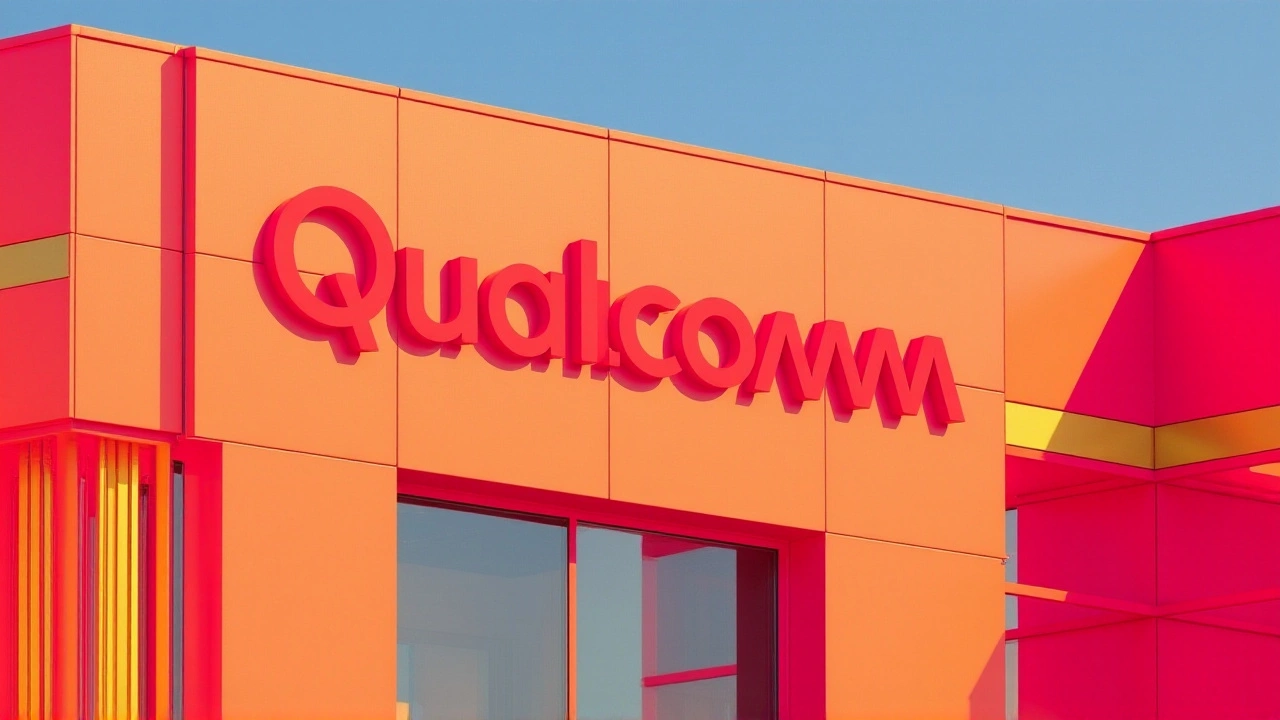On October 27, 2025, Qualcomm Incorporated saw its stock valuation thrown into confusion — not because of a market crash, but because of wildly conflicting data from trusted financial sources. While Trading Economics reported shares hitting $195.80 — the highest since July 2024 — its own data simultaneously claimed the high was just $172.07. Meanwhile, Brian Colello, an analyst at Morningstar, cited a trading price of $158.09, even as Qualcomm’s own investor relations page listed a closing price of $187.68. The disconnect isn’t just confusing — it’s telling. In a market obsessed with AI, investors are scrambling to separate hype from hardware, and Qualcomm sits squarely at the center of that tension.
Why the Confusion? Data, Timing, and the AI Hype Cycle
The discrepancies aren’t random. They reflect how financial data is aggregated, delayed, or interpreted differently across platforms. Trading Economics reported a 16.89% gain over four weeks — then contradicted itself with a 1.03% loss in the same window. Morningstar’s numbers, meanwhile, were more granular: a daily range of $157.57 to $161.49, with a 52-week range stretching from $120.80 to $211.09. That’s a 74% swing in just a year. And yet, the company’s own closing price of $187.68 suggests the market was already pricing in something bigger — not just chips, but the future.The Humain Deal: A Quiet Catalyst for AI Ambition
The real story isn’t in the price noise. It’s in the quiet upgrade. On October 27, 2025, Brian Colello raised Qualcomm’s fair value estimate from $170 to $185 — a modest bump on paper, but a signal with teeth. The reason? The Humain deal. Though details remain scarce, Humain is a little-known startup specializing in AI-driven speech and natural language interfaces for mobile devices. For Qualcomm, this isn’t about buying a product. It’s about owning the next layer of AI interaction — the voice-controlled, context-aware assistant that lives inside your phone, not on the cloud. That’s a game-changer for chipmakers. If your processor can run AI locally, without relying on servers, you become indispensable. And Qualcomm’s Snapdragon chips are already in 80% of Android flagships.Patents, Royalties, and the Silent Cash Machine
Don’t underestimate what Qualcomm earns just by owning the rules. Its patents on CDMA and OFDMA aren’t just technical milestones — they’re legal monopolies. Every 3G, 4G, and 5G phone sold pays Qualcomm a royalty. That’s not revenue from selling chips. That’s revenue from *everyone else* selling phones. In 2024, that royalty stream brought in over $8 billion. And it’s growing. With 5G adoption still expanding in India, Southeast Asia, and Latin America, this cash cow isn’t slowing down. Morningstar calls it “a key strength,” and rightly so. It’s the bedrock that lets Qualcomm gamble on AI ventures like Humain.The Bear Case: When Customers Become Competitors
But here’s the twist. The same companies that pay Qualcomm royalties are quietly building their own chips. Apple’s A-series processors. Samsung’s Exynos. Even Google’s Tensor chips. These aren’t just alternatives — they’re strategic moves to reduce dependency. Brian Colello warns of “potential share loss at Samsung and Apple.” That’s not speculation. Apple cut its Qualcomm chip orders by 40% in 2023, and Samsung’s in-house designs now power half its flagship phones. If this trend accelerates, Qualcomm’s chip business — once its crown jewel — could shrink. That’s why the Humain deal matters so much. It’s not just about AI. It’s about pivoting from being a component supplier to becoming an AI platform enabler.
What’s Next? The 6 Valuation and the Road Ahead
Here’s the most startling number in Colello’s report: a $236 fair value estimate. That’s 50% higher than the current trading price. It’s not a prediction. It’s a bet. A bet that Qualcomm can turn its royalty cash flow into AI dominance. The company’s forward dividend yield of 2.25% and total yield of 5.47% make it a rare blend: a growth stock with income. Investors aren’t just chasing chips. They’re betting on Qualcomm becoming the NVIDIA of mobile AI — the invisible engine powering smarter phones, cars, and wearables. The market hasn’t caught up yet. But if Humain’s tech integrates successfully into next-gen Snapdragon chips, it could be the spark.Background: From CDMA to AI — The Evolution of a Tech Giant
Founded in 1985, Qualcomm started as a niche wireless tech firm. Its breakthrough? CDMA, a signal technology that became the backbone of 2G and 3G networks. By the time 4G rolled out, Qualcomm controlled over 70% of the essential patents. That dominance turned it into a licensing powerhouse. But as smartphones matured, its chip business faced pressure. The 2017 FTC antitrust case shook investor confidence. Then came 5G — and a resurgence. Today, Qualcomm supplies processors to nearly every premium Android phone, plus chips for cars, AR headsets, and smart factories. The Humain acquisition is the next logical step: moving from connectivity to cognition.Frequently Asked Questions
How does the Humain deal change Qualcomm’s position in the AI race?
The Humain deal gives Qualcomm direct access to on-device AI speech technology — a critical gap in its portfolio. While rivals like Apple and Google rely on cloud-based assistants, Humain’s tech allows Qualcomm to embed real-time, low-latency voice AI directly into Snapdragon chips. This could make Qualcomm the preferred partner for automakers and wearable makers who need privacy-first, offline AI — turning licensing revenue into embedded system dominance.
Why is there such a big gap between Qualcomm’s stock price and its fair value estimate?
The gap reflects investor skepticism about Qualcomm’s chip business amid Apple and Samsung’s in-house designs. But the $236 fair value from Morningstar assumes the company successfully pivots to AI platforms. If Humain’s tech integrates into next-gen chips and drives new licensing deals, the market may suddenly realize Qualcomm’s royalty cash flow is more valuable than its hardware sales — a re-rating that could take shares well above $200.
What risks does Qualcomm face from its biggest customers?
Apple and Samsung are reducing reliance on Qualcomm’s modem chips, with Apple now using its own 5G modems since 2023. Samsung’s Exynos chips are gaining ground in Europe and Asia. If these trends continue, Qualcomm’s chip revenue — already down 12% YoY in 2024 — could shrink further. That’s why the company is betting its future on AI licensing and automotive chips, where competitors have less control.
Is Qualcomm’s dividend sustainable given its stock volatility?
Yes. With $8.2 billion in annual royalty income and only $2.1 billion in dividends paid out in 2024, Qualcomm’s payout ratio is under 26%. Even if chip sales decline, the patent revenue provides a steady floor. The forward dividend yield of 2.25% is attractive compared to the S&P 500 average of 1.5%, making it a rare safe-haven stock in the tech sector.
How does Qualcomm compare to NVIDIA in the AI chip market?
NVIDIA dominates server-based AI, but Qualcomm is building the mobile edge. While NVIDIA’s chips need cooling and power, Qualcomm’s Snapdragon chips run AI on smartphones and cars using under 5 watts. That’s a different battlefield. Qualcomm isn’t trying to beat NVIDIA — it’s building the infrastructure that makes AI usable everywhere, from your earbuds to your dashboard. It’s the difference between a supercomputer and a smart assistant.
What should investors watch for in the next six months?
Watch for Qualcomm’s Q1 2026 earnings report, due in January 2026, for updates on Humain integration and automotive chip sales. Also monitor Apple’s next iPhone launch — if it continues to use its own modem, that’s a red flag for Qualcomm’s chip business. But if Qualcomm announces a new AI partnership with a major automaker or smart speaker brand, that could be the signal the market’s been waiting for.
